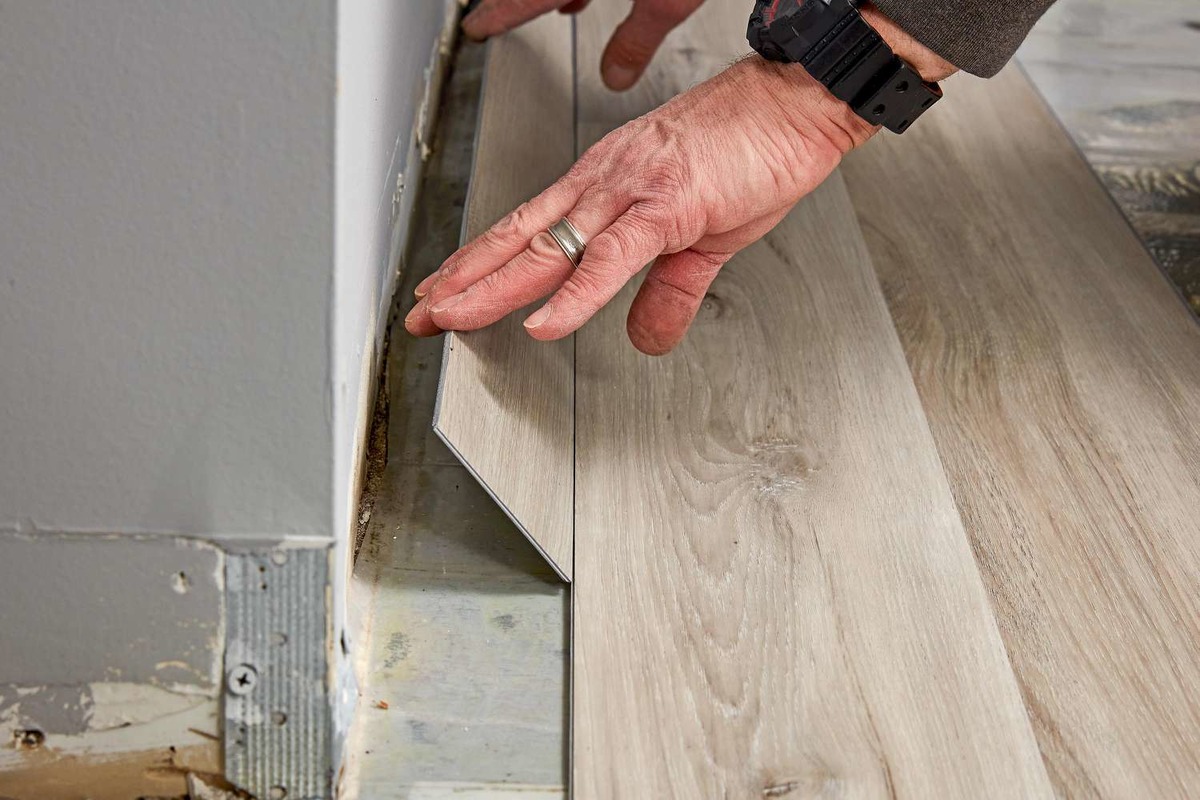Picture this: you’re standing in your bare, concrete basement, gazing up at the unfinished ceiling. You’ve dreamt about transforming this space into a cozy family room, a vibrant playroom for the kids, or maybe even a beautiful home office. You’ve researched endlessly, comparing floor options until you land on vinyl: durable, stylish, and surprisingly affordable. But then you hit a snag.

Image: www.thehomedigs.com
“Do I need underlayment for vinyl flooring?” you ask yourself. It seems like a question with a simple answer, but the reality is a bit more nuanced. The answer depends on the type of vinyl, the subfloor, and your personal preferences. Let’s dive into the world of vinyl flooring and underlayment together and find the right solution for your home.
What is Underlayment and Why Does it Matter?
Underlayment is a layer of material that’s installed beneath your flooring, serving as a cushion and offering several benefits. It’s like a hidden superhero, working tirelessly behind the scenes to improve the comfort, warmth, and longevity of your flooring. But what are the superpowers of underlayment?
- Sound Absorption: Underlayment can significantly reduce noise from footsteps and furniture movements. That means a quieter home, especially important for multi-level dwellings or when you’re walking above noise-sensitive spaces.
- Added Comfort: Underlayment provides a softer surface, making your floor more comfortable to stand and walk on, especially for those with sensitive feet or joints.
- Warmer Feet: Some underlayments offer thermal resistance, acting as a barrier against cold subfloors. This is a godsend in colder climates, making your vinyl flooring feel warmer underfoot.
- Subfloor Protection: Underlayment can help protect your subfloor from scratches, dents, and moisture, extending the lifespan of your floor and your home.
- Improved Flooring Performance: Finally, underlayment can help your vinyl flooring lay flatter and more evenly, minimizing wrinkles and gaps.
Underlayment for Vinyl Flooring: The Big Questions
Now, you’re probably wondering, “So, do I REALLY need underlayment for my vinyl flooring?” The short answer is: it depends.
Types of Vinyl Flooring
- Luxury Vinyl Plank (LVP) & Luxury Vinyl Tile (LVT): These popular options are thicker and more durable than traditional sheet vinyl, which means they usually don’t require underlayment for added support. However, they still benefit from the noise reduction and warmth underlayment provides.
- Sheet Vinyl: This thinner and less rigid type of vinyl can benefit from underlayment, especially if the subfloor is uneven or if you desire additional insulation and noise reduction.
Subfloor Condition
- Concrete: Concrete floors are inherently cold and can be uneven, making underlayment a good idea for vinyl flooring.
- Wood: If your wood subfloor is in good condition and leveled, underlayment might not be essential. However, if you’re worried about noise or need additional warmth, it’s still worthwhile.
- Uneven Subfloor: Regardless of the material, an uneven subfloor can cause issues with your vinyl flooring. Underlayment can help create a more even surface, making for a smoother, more appealing installation.
Personal Preferences
At the end of the day, your comfort and design goals play a crucial role. Do you value warmth? Do you want to minimize noise? Do you prioritize the softest, most comfortable feeling underfoot? These factors can influence your decision about underlayment.
What Types of Underlayment are Available?
Once you’ve decided you need underlayment, you’ll need to choose the right type. Here’s a quick rundown:
- Foam Underlayment: Popular and affordable, foam underlayment is great for noise reduction, cushioning, and warmth. Choose a higher-density foam for greater durability and longevity.
- Cork Underlayment: Known for its luxurious feel and excellent sound insulation, cork is also naturally antimicrobial and moisture-resistant. However, it’s more expensive than foam and may not be suitable for high-traffic areas.
- Rubber Underlayment: Durable and great for sound insulation, rubber underlayment offers excellent moisture resistance and can be a good choice for areas prone to water damage.
- Fiberboard Underlayment: This type of underlayment offers excellent moisture resistance and can help level out slightly uneven subfloors.

Image: bcfloors.ca
Expert Tips for Choosing the Right Underlayment
When choosing underlayment for your vinyl flooring, seek guidance from professionals. Here are some tips:
- Consider the Thickness: Thicker underlayment provides greater cushioning and insulation but can impact floor height and require adjustments to door trims.
- Check the Manufacturer’s Recommendations: Each vinyl flooring product comes with specific installation guidelines that may recommend or require specific underlayments for optimal performance.
- Ask for Samples: Before making your final decision, it’s a good idea to obtain samples of different underlayments to evaluate the feel and firmness.
Do U Need Underlayment For Vinyl Flooring
Wrap Up
Navigating the world of flooring underlayment can be a bit confusing. Ultimately, the decision of whether or not to use it depends on your specific circumstances and preferences. By understanding the benefits, types, and installation considerations, you can make an informed choice that will enhance the beauty, comfort, and durability of your new vinyl flooring! Now that you have a solid understanding, you can embark on the exciting project of transforming your space with a stylish and functional vinyl floor!





